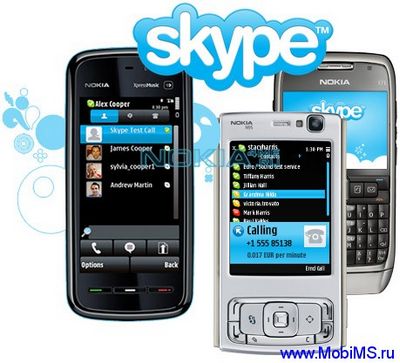
Must-have movie conferencing apps for Android
Must-have movie conferencing apps for Android
Movie conferencing is not exactly something fresh to mobile devices. In fact, when 3G was very first introduced to GSM networks, video-calling was the most-touted feature. Sadly, devices like the Nokia N90 and even the cheap LG KU250 “3G for all” did not end up popularizing movie calling. While carriers theoretically supported video-conferencing through 3G networks, this was a poorly-marketed effort that was ahead of its time.
Swift forward to the era of smartphones, tablet computers and fourth-generation technologies. Today’s IP-based communication can more lightly carry movie calls with ease. iOS users have it effortless, because FaceTime is built right into the iPhone, iPad, iPod touch and Macs. Higher-resolution FaceTime cameras ensure sleek movie conferencing, which is especially pleasurable at swift connections.
Android users might not be so fortunate in terms of built-in offerings, because movie conferencing support will be device-dependent (read: if the device has a front-facing camera and if the specs can treat movie calls). Still, movie conferencing on capable devices can be a breeze if you have the right apps. What’s best is that most apps that work well with Android are also cross-platform, so users can lightly talk with other mobile or desktop users even on different platforms.
Here are our top choices.
Google Hangouts
Google Hangouts is, of course, the default talk app on Android devices, albeit it does not come pre-installed on all Android phones and tablets. In fact, its predecessor, Google Talk, did not necessarily come with support on all ROMs. But Hangouts is an evolving product that actually combines various Google talk and communication efforts, including Talk, Google+ Messenger and Google+ Hangouts.
Google Hangouts works with up to ten users in a video-conference, and the app has a high threshold for poor connectivity, so you can count on your Hangout still working even if you have a slow or choppy connection (quality will automatically adjust). Google Hangouts is also more limber than your usual talk and video-conferencing app, because it is now integrated with Google Voice (clarification: calling regular telephones is a feature only available on the iOS variant for now). You can call regular telephone lines and have them as part of your conversation.
Google Hangouts is also cross-platform, and there are native apps on both Android and iOS, plus a web version that runs on Google Chrome. While the app does have the occasional bug (which might cause you to miss calls), Google is permanently improving its Hangouts network and application.
Google Hangouts is a free download or update from Google Play, the App Store and for desktop.
Tango
Yet another free app, Tango has been around for at least half a decade, commencing out as a calling service. The app is also a cross-platform suggesting, and works across Android, iOS and desktop. The app primarily offers voice calling, as opposed to Google Hangouts, which concentrates primarily on talk and movie calls. Plus, users can exchange text messages and switch to movie conference when a virtual face-to-face is the better mode of communication.
Tango has also recently launched itself as a platform for distributing games and content — a strategy that a lot of talk apps have taken themselves to doing, such as LINE, Kakao Talk and WeChat. Premium content is profitable, after all, and IM networks are earning ems of millions of dollars per year on stickers alone!
Tango is also free on Google Play and other platforms.
Skype
Perhaps the gold standard in movie conferencing and voice calls, Skype offers secure messaging for free, and supports voice calls, instant messaging and movie calls across platforms. Versions for iOS, Android, Windows Phone and various desktop platforms exist (the app is now possessed by Microsoft, after all). Skype also has offerings for both consumer and enterprise customers, which means businesses are also using Skype for mission critical communications.
Skype’s basic service is free, albeit users can also pay for premium services like outbound calls to regular telephones, an inbound telephone number, and the like. One disadvantage, however, is that Skype users more resources than other apps because of its distributed processing platform. Skype essentially uses each connected device by taking idle CPU time and using it to process data.
Still, it’s a good app to have if you want a reliable talk and movie conferencing app on Android. Skype is a free download on Google Play and other platforms.
ooVoo
ooVoo is another free, cross-platform video-conferencing app popular among Android users. The developers promise the best movie quality even on low bandwidth situations, and users can video-conference with up to twelve people in a group. Being cross-platform, the app has variants for iOS, Android and desktop computers. The Android version itself supports at least three hundred devices (which is a good thing, considering fragmentation and differences in device capabilities).
ooVoo even has a feature very popular in photo apps today: filters. Users can set up filters during a movie conference, to add some effects to their movie stream. Get ooVoo now from Google Play.
Conclusion
Movie is not exactly a mainstream usage screenplay for these apps, because most users would rather send an instant message or call, which is usually simpler. But the fact that devices are now more capable of treating movie calls with their built-in hardware makes this functionality more accessible. Now, movie conferencing no longer requires expensive equipment meant for the corporate setting. Any smartphone, tablet or notebook computer will do.
But going beyond consumer-grade movie talks and conferencing, the enterprise movie conferencing industry is set to grow to a $1.1 billion dollar industry for “immersive” movie talking applications in three years’ time. The entire video-conferencing industry is set to grow to $Three.8 billion by that time. Interestingly, three quarters of petite businesses believe that in three years, video-conferencing will be the default means of communication on mobile and desktop devices. Will that mean goodbye to voice calls?